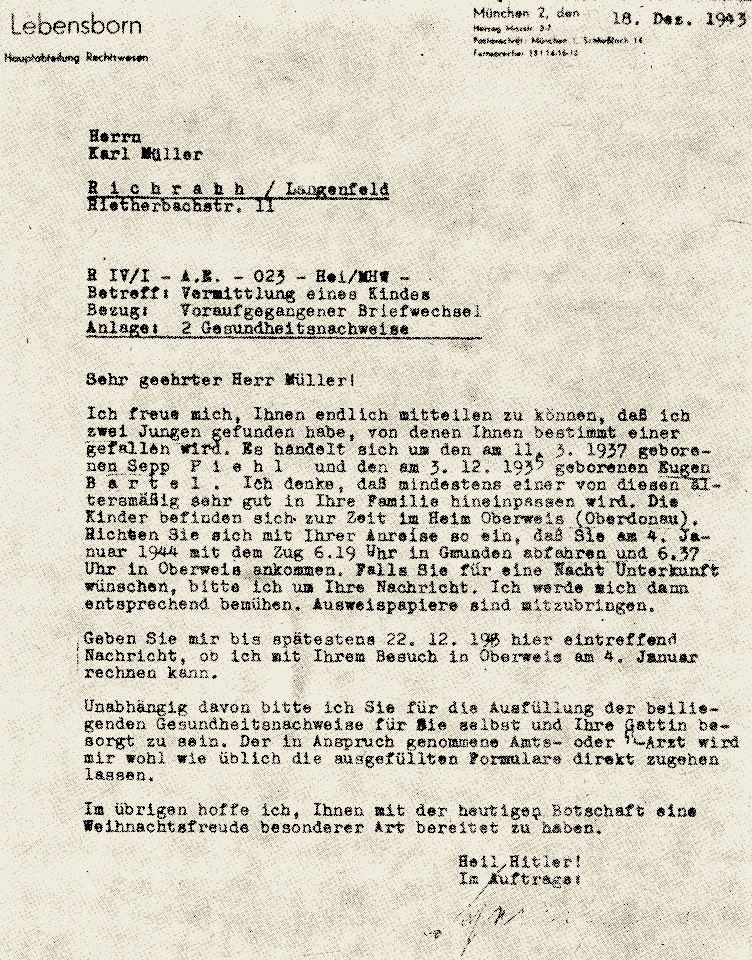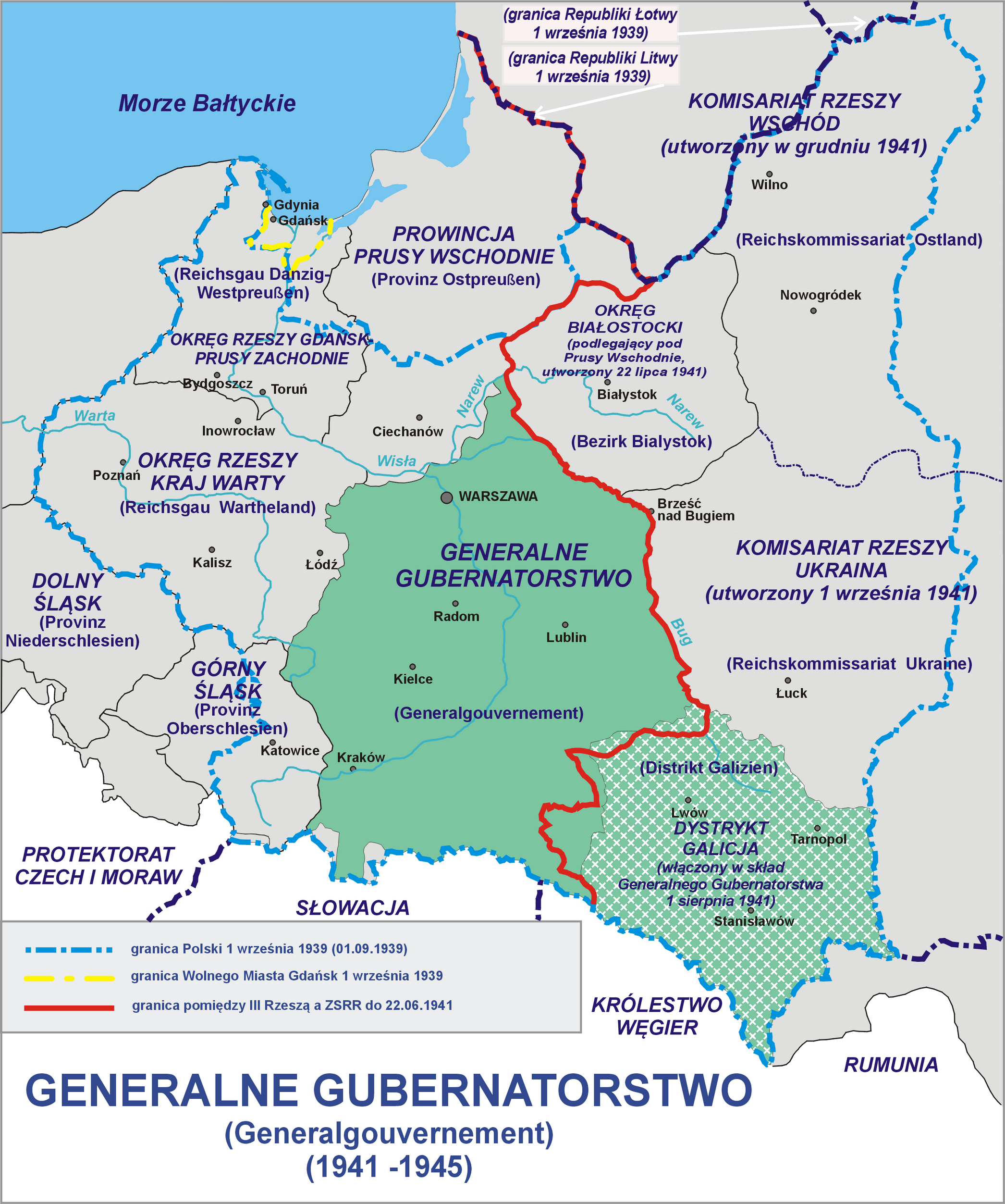|
Iłowo-Osada
Iłowo-Osada is a village in Działdowo County, Warmian-Masurian Voivodeship, in northern Poland. It is the seat of the gmina (administrative district) called Gmina Iłowo-Osada. It lies approximately south-east of Działdowo and south of the regional capital Olsztyn. It is located in the historic region of Masuria. History Initially, the villages of Iłowo-Osada and Iłowo-Wieś formed one village, simply named Iłowo. It was divided only after 1945. In the late 19th century, the village had an almost entirely Polish population of 416. World War II Following the invasion of Poland by Nazi Germany, Iłowo became the location of one of three sub-camps of the Soldau concentration camp in nearby Działdowo. The Iłowo transit camp existed in 1941–45. Prisoners were held at a brick building (pictured) and the adjacent barracks. Up to 2,000 Polish children 5-years-old and younger were among the prisoners as well as pregnant women-inmates awaiting birth (see also ''Kidnapping o ... [...More Info...] [...Related Items...] OR: [Wikipedia] [Google] [Baidu] |
Gmina Iłowo-Osada
__NOTOC__ Gmina Iłowo-Osada is a rural gmina (administrative district) in Działdowo County, Warmian-Masurian Voivodeship, in northern Poland. Its seat is the village of Iłowo-Osada, which lies approximately south-east of Działdowo and south of the regional capital Olsztyn. The gmina covers an area of , and as of 2006 its total population is 7,167 (7,359 in 2011). Villages Gmina Iłowo-Osada contains the villages and settlements of Białuty, Białuty Kolonia, Brodowo, Chorap, Dwukoły, Dźwierznia, Gajówki, Iłowo-Osada, Iłowo-Wieś, Janowo, Kolonie Narzymskie, Krajewo, Kraszewo, Mansfeldy, Mławka, Narzym, Pruski, Purgałki, Sochy and Wierzbowo. Until 2003 it also included the village of Piekiełko, which is now a part of the town of Mława in neighbouring Masovian Voivodeship. Neighbouring gminas Gmina Iłowo-Osada is bordered by the town of Mława and by the gminas of Działdowo, Janowiec Kościelny Janowiec Kościelny is a village in Nidzica Count ... [...More Info...] [...Related Items...] OR: [Wikipedia] [Google] [Baidu] |
Soldau Concentration Camp
The Soldau concentration camp established by Nazi Germany during World War II was a concentration camp for Polish and Jewish prisoners. It was located in Działdowo (), a town in north-eastern Poland, which after the Nazi-Soviet invasion of Poland in September 1939 was annexed into the Province of East Prussia. The camp was founded in the former Polish Army barracks by ''SS-Brigadeführer'' Otto Rasch with the approval of Reinhard Heydrich. The first prisoners were brought by the end of September 1939. They were the Polish Army defenders of the Modlin Fortress who were forced to capitulate due to lack of ammunition and food. The camp served different purposes throughout its existence. The Polish intelligentsia, priests and political prisoners were secretly executed there,Henry Friedlander (1995). ''The Origins of Nazi Genocide: From Euthanasia to the Final Solution'', p. 139. The University of North Carolina Press. . in addition to 1,558 patients from all the psychiatric hospitals ... [...More Info...] [...Related Items...] OR: [Wikipedia] [Google] [Baidu] |
Iłowo-Wieś
Iłowo-Wieś is a village in the administrative district of Gmina Iłowo-Osada, within Działdowo County, Warmian-Masurian Voivodeship, in northern Poland. It lies approximately north of Iłowo-Osada, south-east of Działdowo, and south of the regional capital Olsztyn Olsztyn ( , ) is a city on the Łyna River in northern Poland. It is the capital of the Warmian-Masurian Voivodeship, and is a city with powiat rights, city with county rights. The population of the city was estimated at 169,793 residents Olsz .... References Villages in Działdowo County {{Działdowo-geo-stub ... [...More Info...] [...Related Items...] OR: [Wikipedia] [Google] [Baidu] |
Działdowo County
__NOTOC__ Działdowo County () is a unit of territorial administration and local government (powiat) in Warmian-Masurian Voivodeship, northern Poland. It came into being on January 1, 1999, as a result of the Polish local government reforms passed in 1998. Its administrative seat and largest town is Działdowo, which lies south of the regional capital Olsztyn. The only other town in the county is Lidzbark, lying west of Działdowo. (This should not be confused with Lidzbark Warmiński, another town in Warmian-Masurian Voivodeship, which is the seat of Lidzbark County.) The county covers an area of . As of 2019 its total population is 65,288, out of which the population of Działdowo is 21,279, that of Lidzbark is 7,794, and the rural population is 36,215. Neighbouring counties Działdowo County is bordered by Ostróda County to the north, Nidzica County to the north-east, Mława County to the south-east, Żuromin County to the south-west, Brodnica County and Nowe Miasto County ... [...More Info...] [...Related Items...] OR: [Wikipedia] [Google] [Baidu] |
Hans Kummetz
Oberleutnant Hans Kummetz (29 April 1890 – 11 January 1918) was a World War I flying ace credited with seven aerial victories. Biography Hans Kummetz was born on 29 April 1890 in Illowo, then part of the German Empire but now in Poland. His early military career is unknown, including any pilot training or early aviation service.Franks et al 1993, p. 152. However, he became the ''Staffelführer'' of one of the German air service's original fighter squadrons, ''Jagdstaffel 1'' soon after its foundation, on 18 November 1916. The newly formed unit went into action in France on the Western Front. Kummetz would shoot down five enemy aircraft and a French observation balloon, beginning 4 March 1917, with his sixth victory coming on 17 August 1917. He was then posted to ''Jastaschule II'' (Fighter School 2) on 12 September 1917. It is unknown whether he was an instructor or a pupil, with the former being probable. On 12 November, he returned to ''Jasta 1'', which had been repositioned ... [...More Info...] [...Related Items...] OR: [Wikipedia] [Google] [Baidu] |
Operation Barbarossa
Operation Barbarossa was the invasion of the Soviet Union by Nazi Germany and several of its European Axis allies starting on Sunday, 22 June 1941, during World War II. More than 3.8 million Axis troops invaded the western Soviet Union along a front, with the main goal of capturing territory up to a line between Arkhangelsk and Astrakhan, known as the A-A line. The attack became the largest and costliest military offensive in history, with around 10 million combatants taking part in the opening phase and over 8 million casualties by the end of the operation on 5 December 1941. It marked a major escalation of World War II, opened the Eastern Front—the largest and deadliest land war in history—and brought the Soviet Union into the Allied powers. The operation, code-named after the Holy Roman Emperor Frederick Barbarossa ("red beard"), put into action Nazi Germany's ideological goals of eradicating communism and conquering the western Soviet Union to repopulate it w ... [...More Info...] [...Related Items...] OR: [Wikipedia] [Google] [Baidu] |
Invasion Of Poland
The invasion of Poland, also known as the September Campaign, Polish Campaign, and Polish Defensive War of 1939 (1 September – 6 October 1939), was a joint attack on the Second Polish Republic, Republic of Poland by Nazi Germany, the Slovak Republic (1939–1945), Slovak Republic, and the Soviet Union, which marked the beginning of World War II. The German invasion began on 1 September 1939, one week after the signing of the Molotov–Ribbentrop Pact between Germany and the Soviet Union, and one day after the Supreme Soviet of the Soviet Union had approved the pact. The Soviet invasion of Poland, Soviets invaded Poland on 17 September. The campaign ended on 6 October with Germany and the Soviet Union dividing and annexing the whole of Poland under the terms of the German–Soviet Frontier Treaty. The aim of the invasion was to disestablish Poland as a sovereign country, with its citizens destined for The Holocaust, extermination. German and Field Army Bernolák, Slovak forces ... [...More Info...] [...Related Items...] OR: [Wikipedia] [Google] [Baidu] |
Kidnapping Of Children By Nazi Germany
During World War II, around 200,000 ethnic Polish children as well as an unknown number of children of other ethnicities were abducted from their homes and forcibly transported to Nazi Germany for purposes of Forced labour under German rule during World War II, forced labour, Nazi human experimentation, medical experimentation, or Germanization. This was among the most notable Nazi crimes against children. An aim of the project was to acquire and "Germanize" children believed to have Aryan race, Aryan/Nordic race, Nordic traits because Nazi officials believed that they were the descendants of German settlers who had emigrated to Poland. Those labelled "racially valuable" (''gutrassig'') were Forced assimilation, forcibly assimilated in centres and then Forced adoption, forcibly adopted to German families and SS Home Schools. An association, "Stolen Children: Forgotten Victims" (''Geraubte Kinder – Vergessene Opfer e.V.''), is active in Germany, representing victims of German kid ... [...More Info...] [...Related Items...] OR: [Wikipedia] [Google] [Baidu] |
Expulsion Of Poles By Nazi Germany
The Expulsion of Poles by Nazi Germany during World War II was a massive operation consisting of the forced resettlement of over 1.7 million Polish people, Poles from the territories of Occupation of Poland (1939–1945), German-occupied Poland, with the aim of their Germanisation in Poland (1939–1945), Germanization (see ''Lebensraum'') between 1939 and 1944. The German Government had plans for the extensive Settler colonialism, colonisation of territories of occupied Poland, which were annexed directly into Nazi Germany in 1939. Eventually these plans grew bigger to include parts of the General Government. The region was to become a "purely German area" within 15–20 years, as explained by Adolf Hitler in March 1941. By that time the General Government was to be cleared of 15 million Polish nationals, and resettled by 4–5 million ethnic Germans. The operation was the culmination of the expulsion of Poles by Germany carried out since the 19th century, when Poland was Parti ... [...More Info...] [...Related Items...] OR: [Wikipedia] [Google] [Baidu] |
Forced Labour Under German Rule During World War II
The use of Slavery, slave and forced labour in Nazi Germany () and throughout German-occupied Europe during World War II took place on an unprecedented scale. It was a vital part of the Economics of fascism#Political economy of Nazi Germany, German economic exploitation of conquered territories. It also contributed to the mass extermination of populations in occupied Europe. The Germans abducted approximately 12million people from almost twenty European countries; about two thirds came from Central Europe and Eastern Europe.Part1 an Part 2 . Many workers died as a result ... [...More Info...] [...Related Items...] OR: [Wikipedia] [Google] [Baidu] |
Germanisation In Poland (1939–1945)
An intense process of Germanisation was carried out by Nazi Germany in German-occupied Poland during World War II, with the ultimate goal of eliminating Polish culture and people. This included the mass-murder of Polish intellectuals and the kidnapping of Polish children. Ideological background "Adolf Hitler in Mein Kampf proclaimed, language-exclusive Germanisation does not equate to total Germanisation, an alien nation, which expresses its thought in non-German form, degrades the greatness and honour of the German nation. The implementation of Germanisation requires a change of character of the occupied nation via partial expulsion of the Polish populous and the assimilation of the rest, deemed upon their "racially worthy" elements." The greatest fervour of Germanisation was implemented in those regions seized by the German ''Wehrmacht'' during World War II. Frequently in his public rallies, Adolf Hitler called for the displacement and liquidation of Poles inhabiting Poland. ... [...More Info...] [...Related Items...] OR: [Wikipedia] [Google] [Baidu] |





